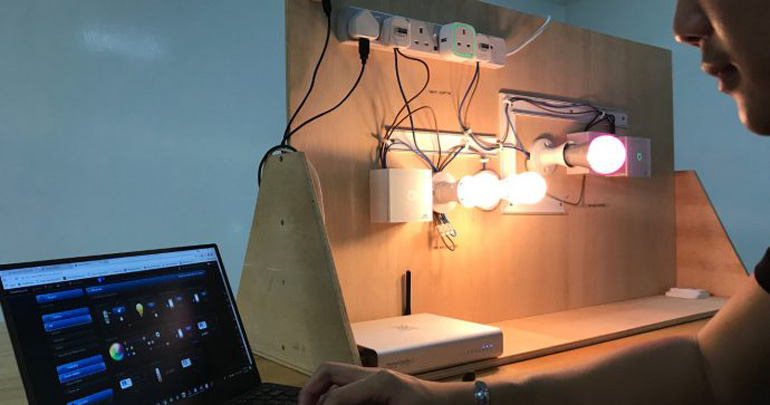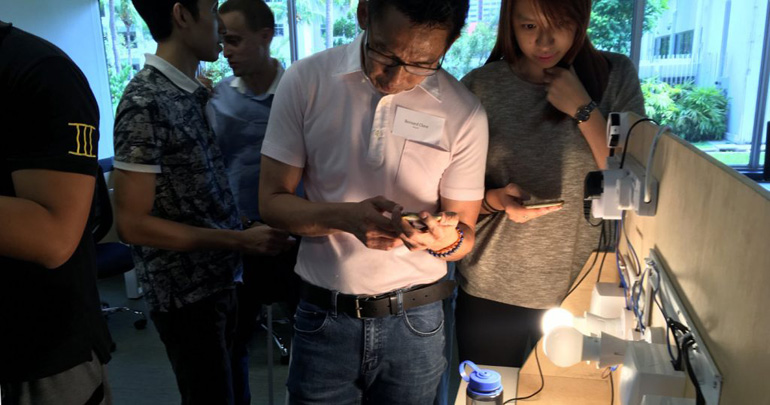
Smart home technology has been one of the most exciting recent developments for independent living. They allow us to control our appliances through every-day devices like our smartphones rather than using specialised, single-purpose devices.
But how do we go about setting up a smart home? Is it expensive? Where do we learn tips? We spoke to Darius Sim, founder of home automation company eVida Smarthome Pte. Ltd., to find out.
How did you get started on smart homes?
I’ve always liked to tinker with hardware: My final year project at the Nanyang Technological University involved developing a wireless and battery-less switch. Together with two school mates, we took the prototype to the Ideas Inc 2013 competition and won a cash prize. We could also receive a $50,000 grant, on condition that we incorporate a company to further the research and development of this product. We founded eVida shortly after.
Since then, I’ve set up numerous smart homes, offices and showrooms, in Singapore as well as in other parts of South East Asia, such as Malaysia, Vietnam and Myanmar.
What’s a typical project like?
Household projects typically start with a floor plan and customer requirements. With that and a budget, I then work out a solution for my customers.
Most of my customers start their smart home projects when remodelling their homes, because it’s easier to set up the electrical infrastructure during renovation.
What’s changed in the smart home market since you started your business?
10 years ago, home automation systems available were typically from brands like ABB, Lutron and Schneider Electric. Home automation systems from these brands were very expensive, and more commonly deployed in commercial settings, such as the hospitality industry.
The trend is moving towards inter-brand device compatibility, so the smart home solutions that we deploy today are much more extensive, and consumers have more options. More importantly, they typically cost less than a third of an equivalent commercial solution.
Additionally, people today are also more aware of the possibilities of smart home technologies due to increased online and print marketing as well as reports on the news.
Smart homes can be a complex subject. Do you conduct workshops for your customers?
I’ve been doing these workshops at Home-Fix XPC for the past 3 years now. With several years in the business, I’ve accumulated many ideas and solutions that many customers find useful, so I’ve condensed all knowledge into a workshop for people who wanted a crash course in both the theory and hands-on aspects of home automation.
Today’s workshop, which was held at the Enabling Village for persons with disabilities, is the first of its kind that we’ve organised.

Participants at a smart home workshop conducted at the Enabling Village on 21 March 2018
What are the most commonly asked questions about the smart home?
The most frequently asked questions are: 1) How much does it cost? 2) How do I integrate it with all my existing appliances and fittings? 3) If the network or internet access is down, can I still control my appliances?
The answers to those questions are: 1) Cost depends on how much you want to do, 2) You can do it yourself or engage a contractor like me, or 3) Yes, you can still control your appliances locally when the internet is down, just without remote access control.
So what’s the most basic set of devices you need to buy to set up a smart home?
Let’s say you want the most basic of setups for a smart home: Just the living room and one bedroom.
You’ll need to buy two types of devices.
One: A gateway device such as the Vera Edge, which you need to connect to your main router via a LAN cable.
Two: “Slave” devices which are to be connected to existing appliances to enable them to be wirelessly controlled from the gateway device. Such “slave” devices can take many forms: smart switches, i.e. wall switches that communicate wirelessly with the gateway; sensors that detect human presence/changes in the environment; or even IR (Infrared) blasters to control the air conditioning units.
After everything is set up, you’ll have at least four ways to control your appliances: 1) Manual operation (i.e. via the wall switch); 2) App control via the smart phone or tablet; 3) A physical remote controller; or if you are quite tech-savvy, 4) a voice controlled speaker, like the Amazon Echo.
Many seniors are not comfortable with using a smartphone. How would they use a smart home?
Many seniors would prefer to use a conventional remote control instead. (Hands over a white, egg-shaped remote control)
What are the most common integrated solutions people ask for in a smart home?
They usually comprise of very simple combinations of devices. They include:
- lights which are triggered to automatically turn on when the door is opened at night;
- motion-triggered washroom lights;
- a master switch that turns off all appliances when you leave the home.
There are also some solutions that are popular with customers who have physical disabilities. For example, an integrated camera and smart lock solution would let you identify a visitor at the door through a video feed, and let them in without having to go to the door.
How do I find out more about smart homes?
They can send questions to me.